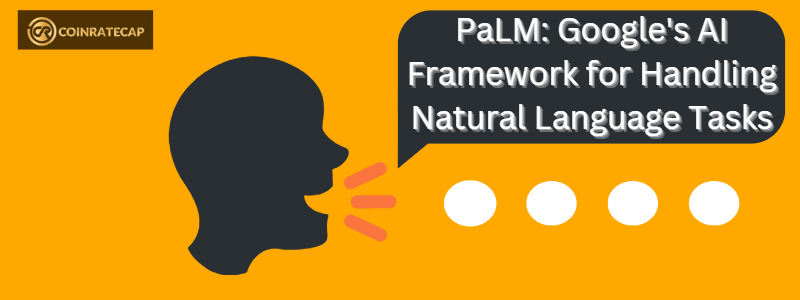
Pathways Language Model (PaLM), released by google is a development in artificial intelligence (AI). The Pathways system was used in training PaLM. This system makes it possible for PaLM to be extremely effective while generalizing tasks across multiple domains.
Google’s AI Framework for Handling Natural Language Tasks
The performance of PaLM improves as its size increases, just like every other large language model, and it can simultaneously process speech, images, and text. As opposed to activating the entire neural network for all tasks, the model is trained to be "sparsely activated" for all tasks of different complexity.
PaLM has outperformed previous large models like Chinchilla and GPT-3 in 28 of 29 natural language processing tasks, so their few-shot performance cannot be compared. On these tasks, it has also performed better than the average human. In comparison to GPT-3's 175 billion parameters, PaLM can scale up to 540 billion parameters. Only the upcoming GPT-4 can rival this.
Furthermore, the PaLM model has been made open-source by Google as well as publicly accessible. Users can now train PaLM using a similar reinforcement learning technique as ChatGPT thanks to a framework created by Lucidrains on Github. This could improve PaLM's functionality.
Google's product, Med-PaLM, which was created using PaLM and its Flan-PaLM variation with instruction-tuned functionality, already uses this state-of-the-art product.
PaLM’s Performance
According to the researchers, PaLM attains a training efficiency of 57.8% when it comes to the use of hardware FLOPs. At this scale, this result is the highest achieved for LLMs. A combination of the parallelism strategy and a reformulated Transformer block is responsible for this. It is because it allows parallel computation of the attention layer as well as the feedforward layer, and improves the optimization of the TPU compiler as well.
PaLM was trained by combining English and multilingual datasets that consist of high-quality Github code, conversations, Wikipedia, books, and web documents. A 'lossless' vocabulary was also developed by the researchers, which maintains whitespace, splits Unicode characters into bytes, and separates numbers into tokens.
Furthermore, across a number of Beyond the Imitation Game Benchmark (BIG-bench) tasks, PaLM exhibits remarkable natural language understanding as well as generation abilities. The model, for instance, understands conceptual combinations appropriately, distinguishes cause from effect, and can even identify a movie from an emoji.
On reasoning tasks requiring common-sense reasoning and multi-step arithmetic, PaLM demonstrates ground-breaking abilities by fusing chain-of-thought prompting with model scale. The model scale did not improve performance this much in previous LLMs like Gopher.
Additionally, it has been demonstrated that LLMs perform well when used for coding tasks like writing code from a description in a natural language like text-to-code, translating code between languages, and correcting compilation errors like code-to-code.
Conclusion
In PaLM, the Pathways system shows its scaling capabilities to thousands of accelerator chips across two TPUs v4 Pods using a well-researched, well-proven, decoder-only Transformer model. It is therefore likely that Google will keep implementing PaLM across a range of its products as time goes on.
Pathways Language Model (PaLM), released by google is a development in artificial intelligence (AI). The Pathways system was used in training PaLM. This system makes it possible for PaLM to be extremely effective while generalizing tasks across multiple domains.

Written by Sam